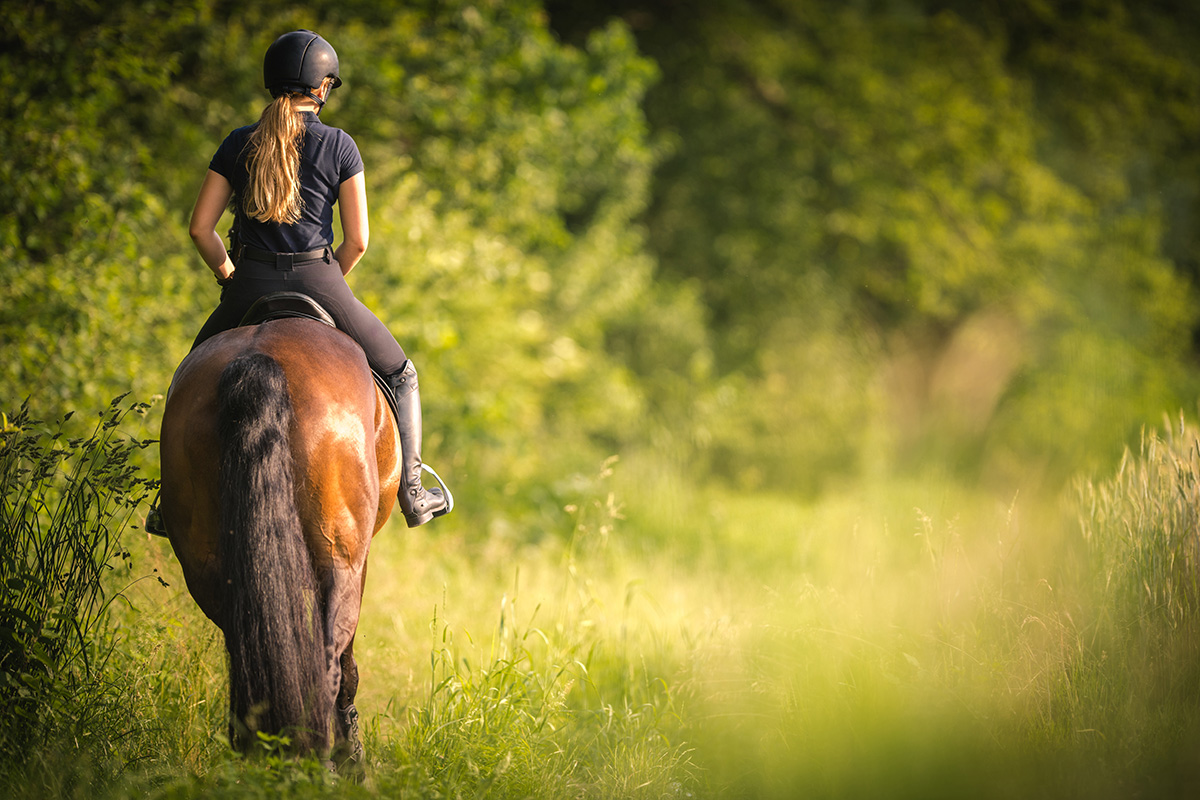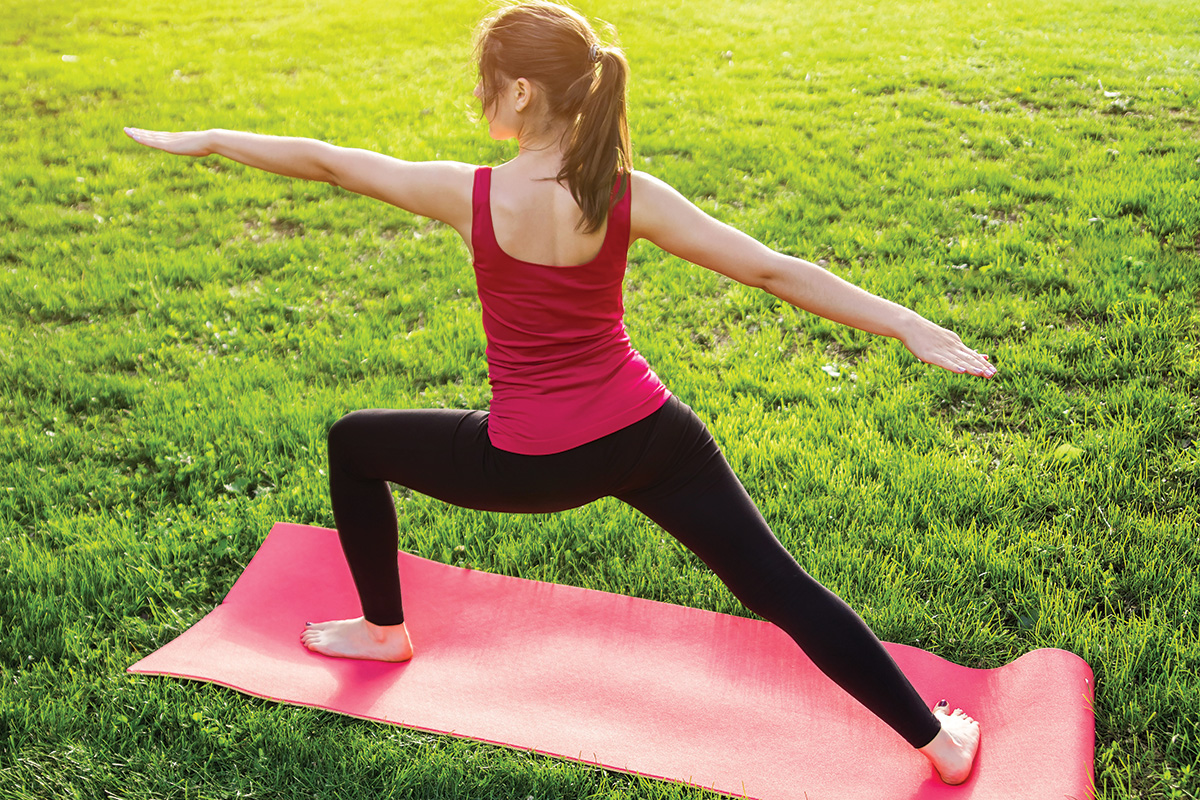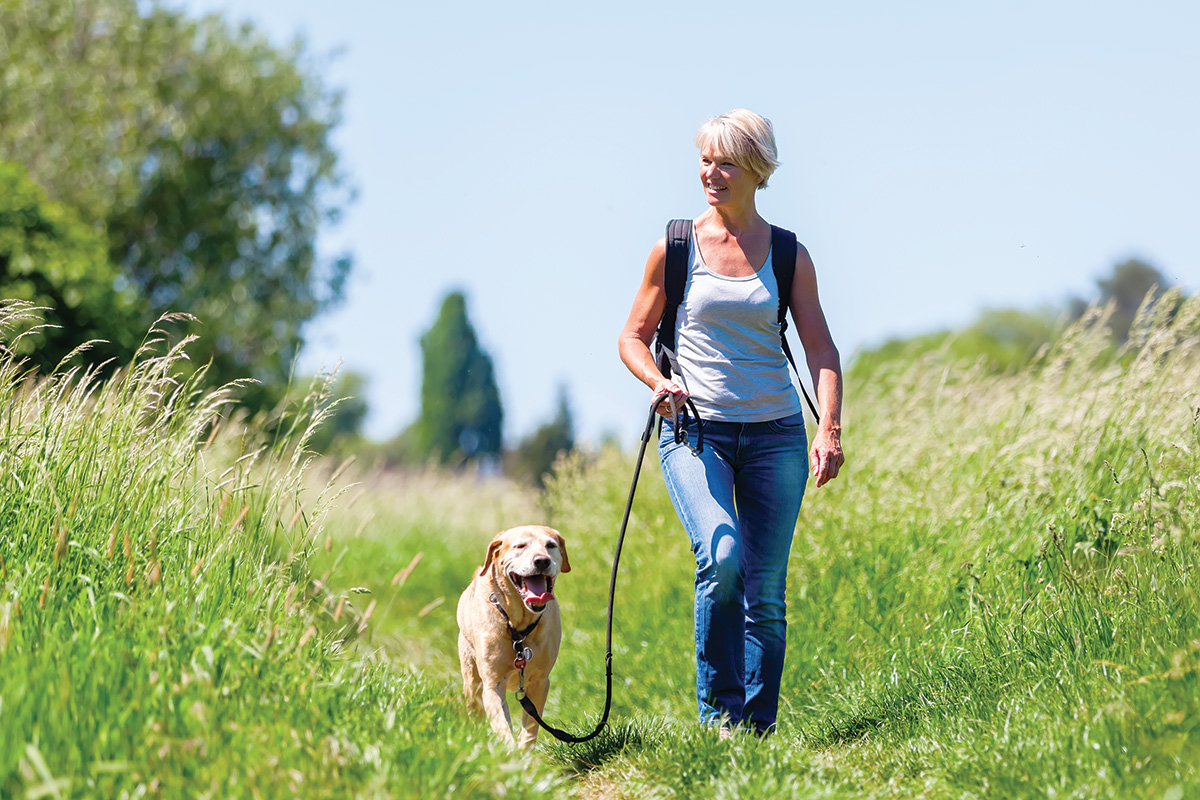
For many of us, squeezing in riding time between work, family, home and other commitments means we may have just an hour or two at a time to devote to our horse routine. And some days, we have much less. It’s frustrating, right? We want to continue to improve our horsemanship. But how do we do that with such a limited amount of time to ride? Luckily, there’s good news. By paying attention to the elements of good riding as we navigate our everyday life, we can improve our riding without spending more hours in the saddle. These can include:
◆ Breathing
◆ Staying in the moment
◆ Relaxation
If you’re ready to leverage your non-riding hours to improve your horsemanship, here are a few ideas to start building daily habits that will translate to your riding.
Because our days are packed, each of these practices takes just a few minutes a day. You can do them anywhere, and all you need is a timer to get started.
Improving Balance
Balance is a key part of being a good rider. When we can balance in the saddle with our body aligned correctly, we can ride without gripping with our legs, shoving our feet forward in the stirrups, or hanging on with the reins.
Better balance means our aids—legs, hands, seat—become independent and precise, and it can help us ride with less pain, too.
Ideas to Try:
◆ Standing yoga poses. Try Mountain, Warrior, Triangle, Tree and Chair poses (visit Yoga Journal for tips).
◆ Stand on a BOSU ball or balance board for a few minutes a couple times a day.
◆ Use a saddle chair or yoga ball instead of a regular desk chair.
◆ Walk or hike on uneven ground.

Improving Breathing
The quality of our breathing impacts our everyday life and significantly affects our riding, and is a key factor to improve. When we hold our breath or our breathing is fast and shallow in our upper chest, it triggers the sympathetic nervous system and the fight or flight response. It also limits the amount of oxygen in our brain and body, which slows down decision making and reaction time.
Not only does shallow breathing create tension and stress in our body, it does the same for your horse. He may respond with tension, bracing, shying, bolting, or being fearful. When you change your breathing to deeper, slower, full breaths, you relax and your horse does, too.
Ideas to Try:
◆ Notice your breathing. Set a timer to ring every hour during the day. When it chimes, simply notice your breathing and how you’re feeling. Are you relaxed and breathing deeply? Are you tense and breathing shallowly? Don’t change anything—just bring awareness.
◆ If you discover your breathing has been shallow or quick, take a few minutes to use one of these tips to deepen your breath.
◆ Try box breathing. Inhale for five counts, hold for five counts, exhale for five counts, hold for five counts. Repeat for five cycles, then return to regular deep breathing.
◆ Try Pilates breathing. Take a long, slow inhale, expanding your lower rib cage as you inhale. Exhale slowly. Repeat three times. It can help to put your hands lightly on your lower ribs and feel the expansion.
Staying in the Moment
Our world doesn’t make it easy to stay present. With social media, games, texts, videos and music as close as our phone, it’s easy to get distracted. Horses, on the other hand, are always in this moment.
A key to good riding is staying present with our horse. If he stumbles, spooks or bucks and our mind is elsewhere—thinking about what to make for dinner, the big meeting tomorrow, our kid’s last report card—that minor blip in our ride can turn into a fall and a major injury for us or our horse. Staying in the moment during your everyday life can help you improve doing the same with your horse.
Ideas to Try:
◆ Practice doing one task a time. Set a timer for 30 minutes. Work only on that task until the timer goes off. Multitasking has been shown to greatly decrease productivity and efficiency.
◆ Take intentional tech breaks. Close email and social media or put your phone in another room for 15 minutes. Start a no-tech-at-dinner challenge.
◆ Go for an awareness walk. Set your timer for 10 minutes. During the walk, bring awareness to one thing, like the sounds you hear, the feeling of your right foot, or looking for the color yellow. When your mind wanders (and it will), come back to your focus area.
◆ Meditate. Focus on your breathing for 10 minutes. Inhale and exhale. When thoughts come up (and they will), notice them and return your focus to your breathing.

Relaxation & Softness
“Relax!” We’ve all heard this from our riding instructors, but forcing yourself to relax often has the opposite effect. Jamming your shoulders down and sitting up straight adds tension, not relaxation. Instead, bring awareness to how your body moves during your everyday to loosen habits of tension and use this to improve your riding.
Ideas to Try:
◆ Use less muscle to do a task. Let’s take driving as an example. Are you holding the steering wheel in a death grip? Are your arms locked, braced or rigid? Practice holding the steering wheel like a baby bird—using just enough pressure to be effective. Take that awareness to other tasks.
◆ Become aware of your posture. Set an hourly timer and notice how your body is positioned. Are you slouched, or are your shoulders raised up to your ears? Take a moment, stand up, move your body, and relax into better posture.
◆ Practice mental softness. Set an hourly timer and notice your inner dialogue. Is it critical, judgmental, stressed or negative, either to yourself or others? If you find this is a frequent mental habit, create a simple phrase to redirect your thoughts. Post it on your computer, bathroom mirror, car dashboard or anywhere else to remind you that you have a choice in how you respond to the day.
Your Turn to Practice in Everyday Life
Take a few minutes and think about which areas are most challenging for you. Pick one to start with and bring focus to it during the day.
Track your practice over several days. A month is even better to build new habits to improve your riding—and maybe everyday daily life!
By spending just a few minutes a day bringing awareness to the elements of good horsemanship, you can deepen your riding skills. No saddle needed.
This article about improving your riding through elements of everyday life appeared in the June 2022 issue of Horse Illustrated magazine. Click here to subscribe!





